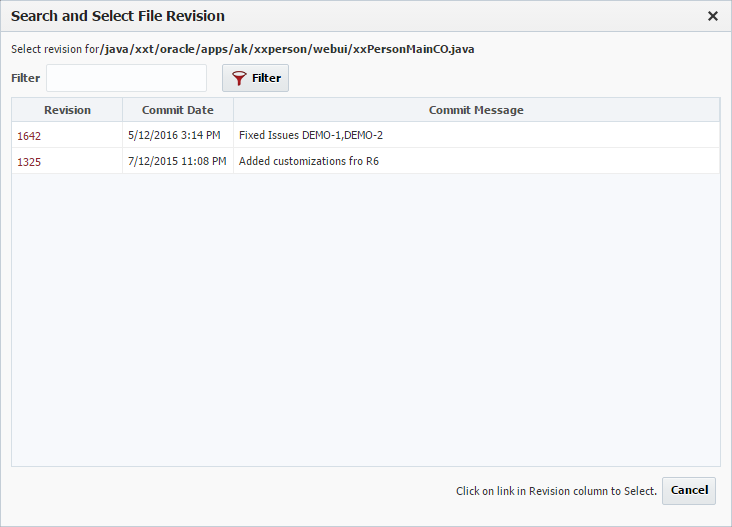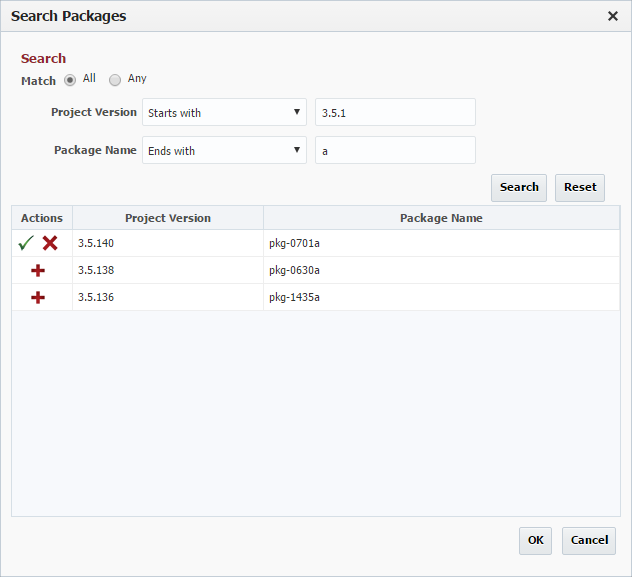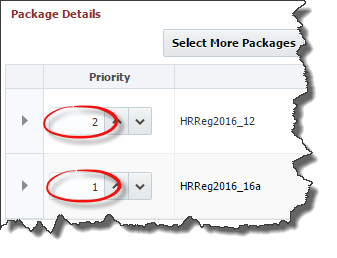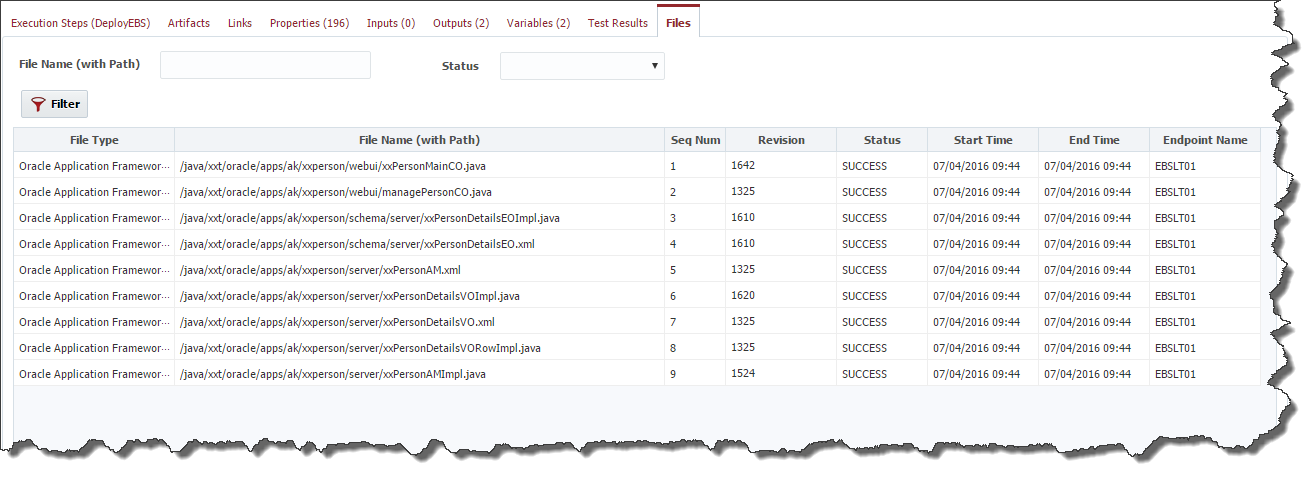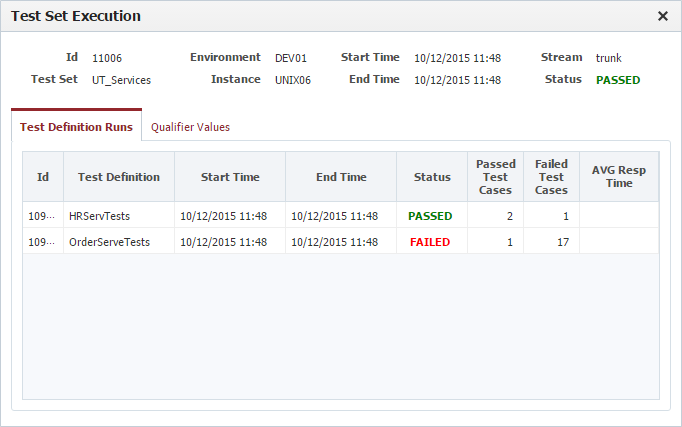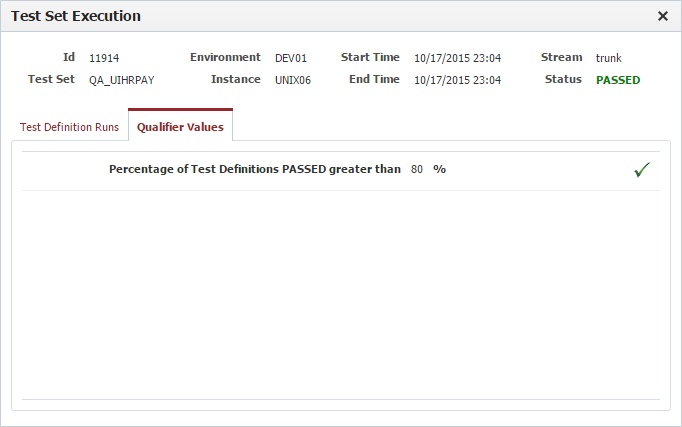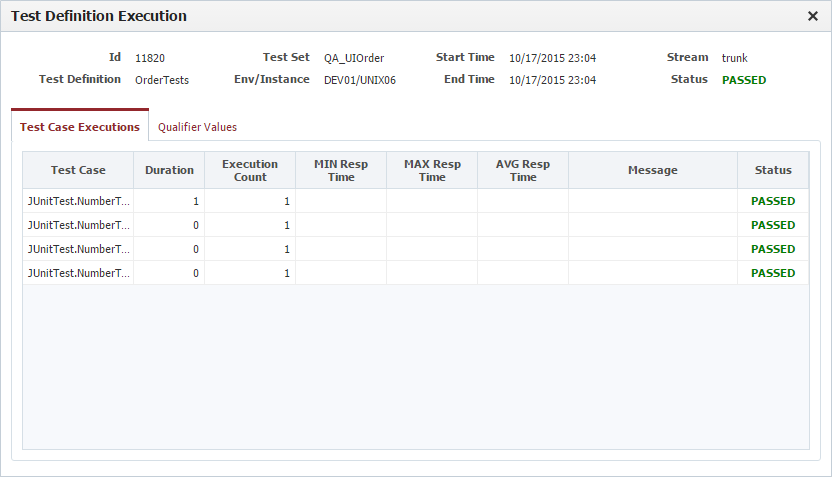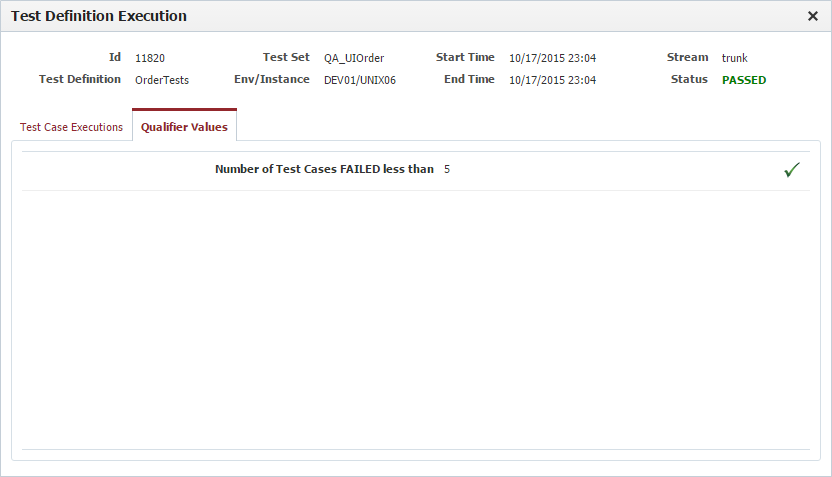...
The Project Activity identifies all build and deployment requests along with the execution status for each request, whether completed/failed, pending approval, scheduled or in progress. The Workflow Request columns provides details pertaining to the build or deployment request that was submitted. Once a workflow request begins execution the Workflow Execution columns will provide details pertaining to its execution on the target instance. Figure 14.2 The Figure below describes the status lifecycle of a workflow request and its workflow execution.
...
Field | Required | Description |
|---|---|---|
Environment | Yes | The environment to execute the build on. Note that if there is only one environment configured for the build, it will be preselected. |
Instance | Yes | The instance to execute the build on. Note that if there is only one instance configured for the build workflow it is preselected and marked and read-only. |
Stream | Yes | Select project stream to build from. Defaults to main stream (trunk). You can select any branch stream configured on the Project Configuration screen. |
Force Build | No | If selected, forces the build even though no changes detected in the source. By default only build if there is any change from last build. Currently only appears when SVN is selected as SCM Type in Project Configuration. |
Workflow Version Override | No | Optionally select the version of the workflow to execute. Defaults to the active version. Defaults to the active version. |
Workflow Inputs | Depends | Enter values for any inputs that are configured for the build workflow. The workflow itself defines whether each input is required or not. |
| Related Tickets | Depends | Optionally, a ticket for your issue tracking system may be required. |
...
Click the Submit Request button to submit the deployment request.
Anchor buildPartialDeployProj buildPartialDeployProj
Building a Partial Deployment Project
| buildPartialDeployProj | |
| buildPartialDeployProj |
From the Execution tab, click the Build button.
...
You may either add the selected files by pressing the Add Selected button or add all the currently filtered files by pressing the Add All button. To return to the Add Files from Package Screen, press the Back to Select Package button. The Cancel button will return you to the Build Request Form.
Removing Files
To remove files from the list of files to be included in the build, select the files and click the Remove Selected File(s) button.
Entering Revisions
On the Note: The revision in the package may be blank for 2 reasons, either the package was created before revisions were tracked or the files is Sources from EBS and not SCM. If it is sourced from EBS, the build will once again take the file available in EBS and not the file that was built in the package you selected.
Removing Files
To remove files from the list of files to be included in the build, select the files and click the Remove Selected File(s) button.
Entering Revisions
On the Build Request Form, you can add revisions for each file you are building.. Currently, these revisions all must be contained by the stream you selected for the build.
You may enter the revision in the text box or click the magnifying glass to look up the revision. When looking up the revision, the following screen will pop up:
You may enter a filter text which will show those revisons that either the Revison or Commit Message contain the Filter Text. To select the revision you want, click on the Revision link.
A empty revision will default to the Head revision on the selected stream.
Selecting Files
To help with selecting and unselecting files the follow buttons are provided:
...
Deploying a Partial Deployment Project
From the Execution tab of a partial deploy project, click the Deploy button.
Enter values in the Deployment Request Form as described in the table below.
...
Field | Required | Description |
|---|---|---|
Project Version | Yes | The version of the project to submit for deployment. |
Environment | Yes | The environment to execute the deployment on. |
Deploy Instance(s) | Yes | The instance(s) to execute the deployment on. The list of instances which appear in the list are the deploy instances which are configured for the project. |
Force Deploy | Yes | Force a deployment to occur even if the project version is already current in the selected environment. Defaults to No. |
Exception To Window | Yes | Indicate that the deployment is being requested to run outside of any defined deployment window, triggering an approval. Defaults to No. |
Start Time | No | An optional delayed start time for the deployment. |
Flex Fields | Depends | Optionally, you can create flex fields for the user to enter as a part of the request. In the Figure 14.9above, the Flex Field is Change #. |
Workflow Version Override | No | Optionally select the version of the workflow to execute. Defaults to the active version. |
Workflow Inputs | Depends | Enter values for any inputs that are configured for the deploy workflow. |
By default the Deployment Request Form will populate with the most recently built package. To modify the list of packages to be deployed, click the Select More Packages button and the screen in the figure below will pop up.
You can Search using Package and Project Version names by completing the fields as shown in Figure 14.12 and by entering the text and selecting the search option (either Starts with, Ends with, Equals, or Contains) as shown above and clicking the Search button. The search results will appear in the table.
...
Field | Required | Description |
|---|---|---|
Match | Yes | Select the Any radio button to indicate that the search results should include packages that contain either Project Version or Package Name search string, or the All radio button to indicate that the search results should only include packages that contain both the Project Version and Package Name search string. |
Project Version | No | The Select the search option (either Starts with, Ends with, Equals, or Contains) and enter the text to search for project versions. |
Package Name | NoThe | instance(s) to execute the deployment on. The list of instances which appear in the list are the deploy instances which are configured for the projectSelect the search option (either Starts with, Ends with, Equals, or Contains) and enter the text to search for package names. |
If you would like to add a package to the deployment, click the Red + sign. To remove a package, click the red X. The green check mark indicates that the files have been added. Click the Save button to accept the files, or the Cancel button to cancel the changes.
Finally, to control the order that the packages are deployed, enter the priority values as shown in the Figure 14.13below. If the priority is a lower value, it will deploy first. Higher values will deploy later. If they have the same priority, they may deploy at the same time.
When you have the set of packages you wish to deploy, click the Submit Request button to submit the deployment request. Each package will run as a separate workflow request and workflow execution in the Project Activity table.
Testing a Project
From the Execution tab, click the Test button.
...
Once a project build or deployment request has been submitted it can be monitored by clicking on the Execution Id.
You can click on the Refresh button and watch the statuses progress throughout the lifecycle until it is either failed or completed. To see more details about an execution click on the id in the Execution Id column of the Project Activity section.
...
For a build, the Files tab display the list of files that were built by this workflow. The Seq Num column indicates the order the files will subsequently be deployed. The Revision is the SCM revision for that file in this build. The list can be filtered by entering a search string to find in the File Path column for each file you want displayed and clicking the Filter button.
For deploy, the Files tab display the list of files that were deployed by this workflow. The Seq Num column indicates the order the files were deployed. the order the files were deployed. The Revision is the SCM revision for that file that was deployed. The Status indicates the status of the file deployment and is one of the following values:
...
The list can be filtered by entering a search string into the File Name (with Path) field and/or choose a status from the Status dropdown then click the Filter button. The Filter will apply to the File Path column.
Test Results
The Test Results tab lists the Test Sets that were executed in this test run and the associated results. By clicking on the small triangle at the front of the Test Set line, the line can be expanded to include all the Test Definitions that were run for the Test Set.
| Anchor | ||||
|---|---|---|---|---|
|
To see the details of the Test Set run, click on the Test Set name which will bring up the Test Set Execution screen. At the top of the screen there is a summary of the results for the Test Set and below are the details for each Test Definition Run.
By clicking on the Qualifier Values tab, you can see detailed results for each Qualifier evaluation as shown in Figure 14.27below. A qualifier that meets the criteria will be marked with a green checkmark, if it fails, it will be marked with a red checkmark.
Figure 14.27
To see the details for a Test Definition, go to the view of the Test Results as shown in Figure 14.25 Results click on the triangle in front of the Test Set to display the Test Definitions and click on the Test Definition Name. This will open the window below with the Test Case details for the Test Definition.
Clicking the Qualifier Values tab will open the view in Figure 14.29 view below to show the detailed results of each qualifier evaluation.
Figure 14.29
Click the Back button to return to the project's workflow execution screen.

